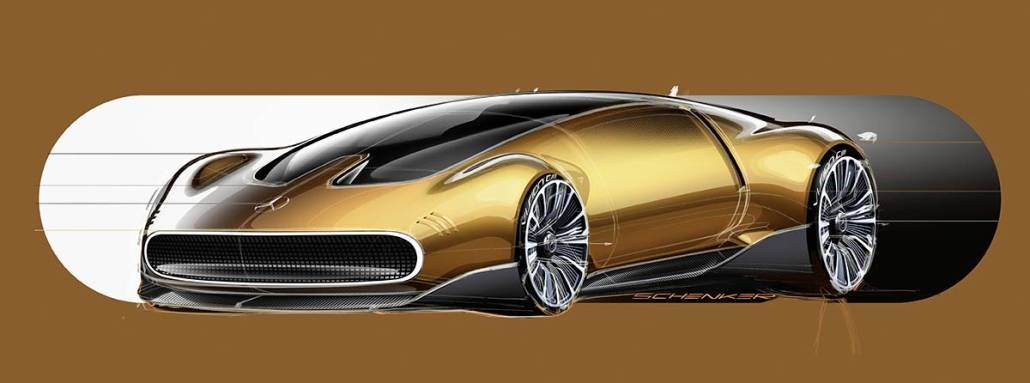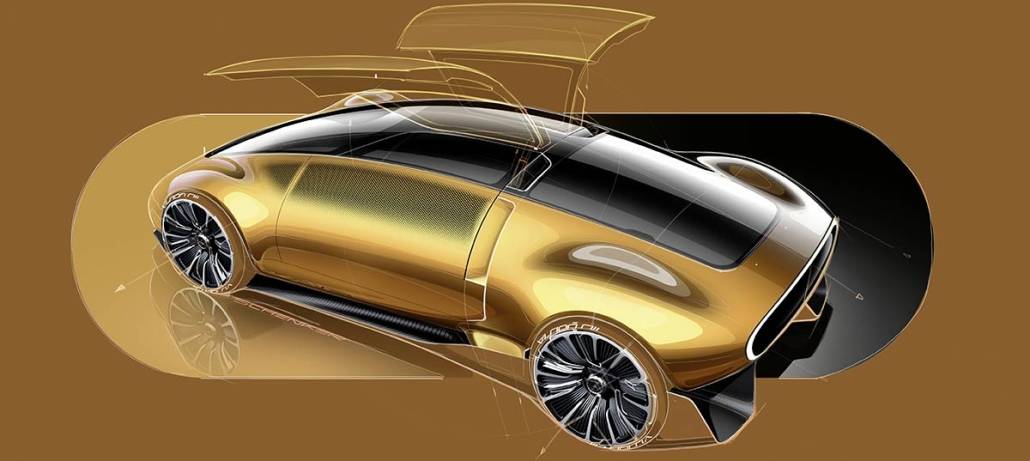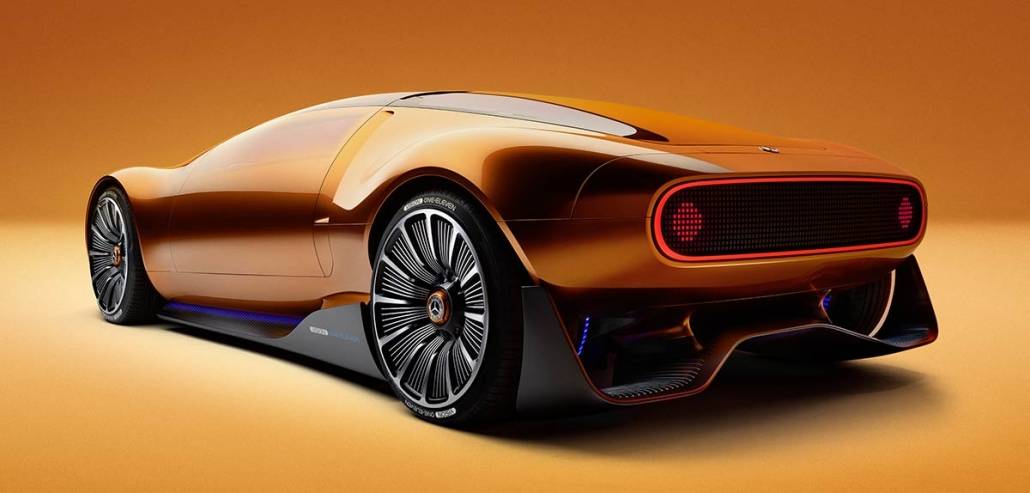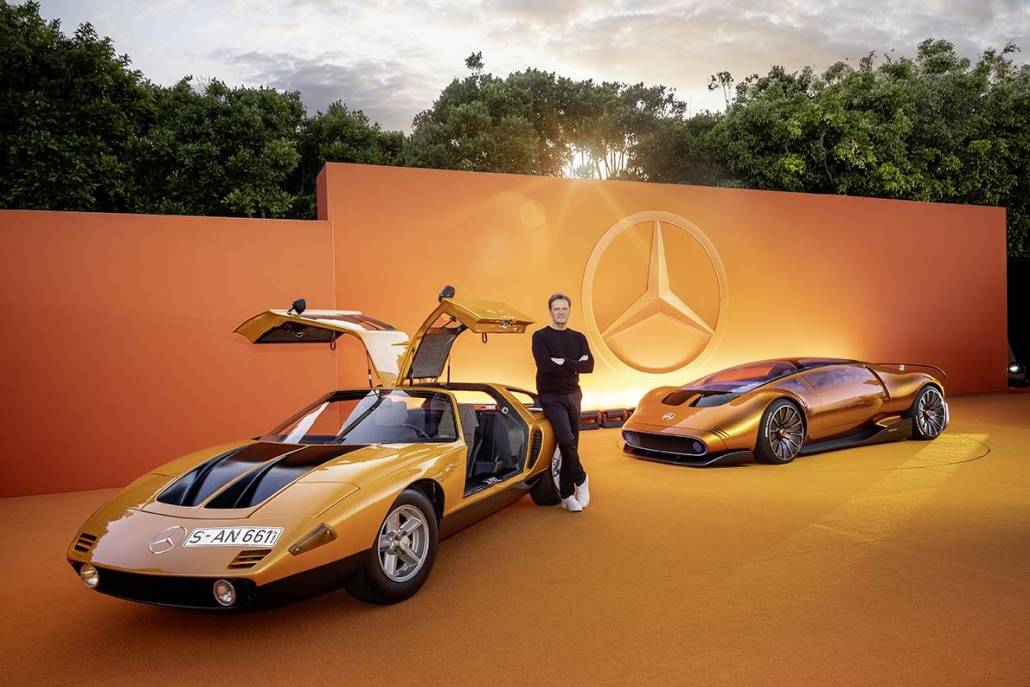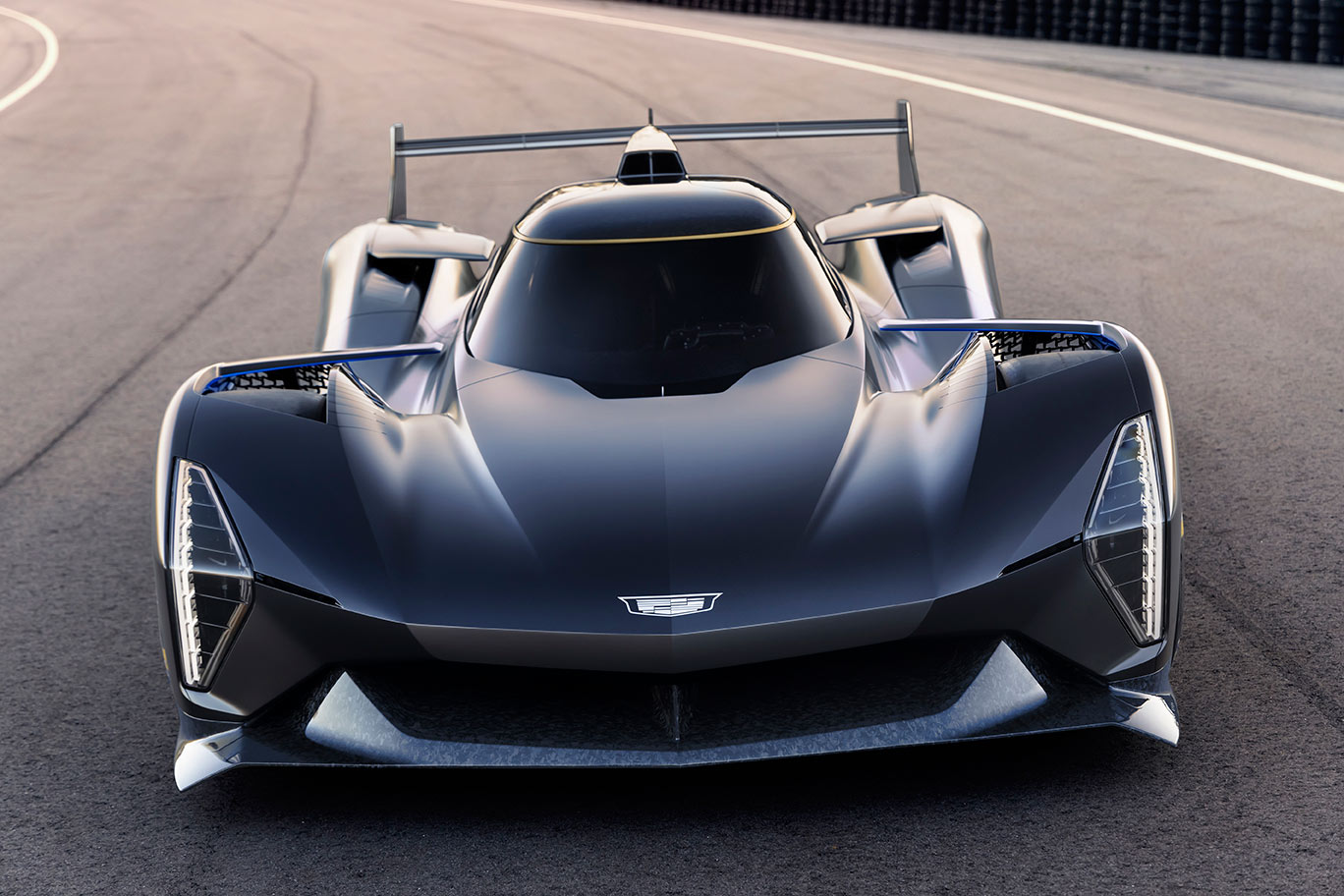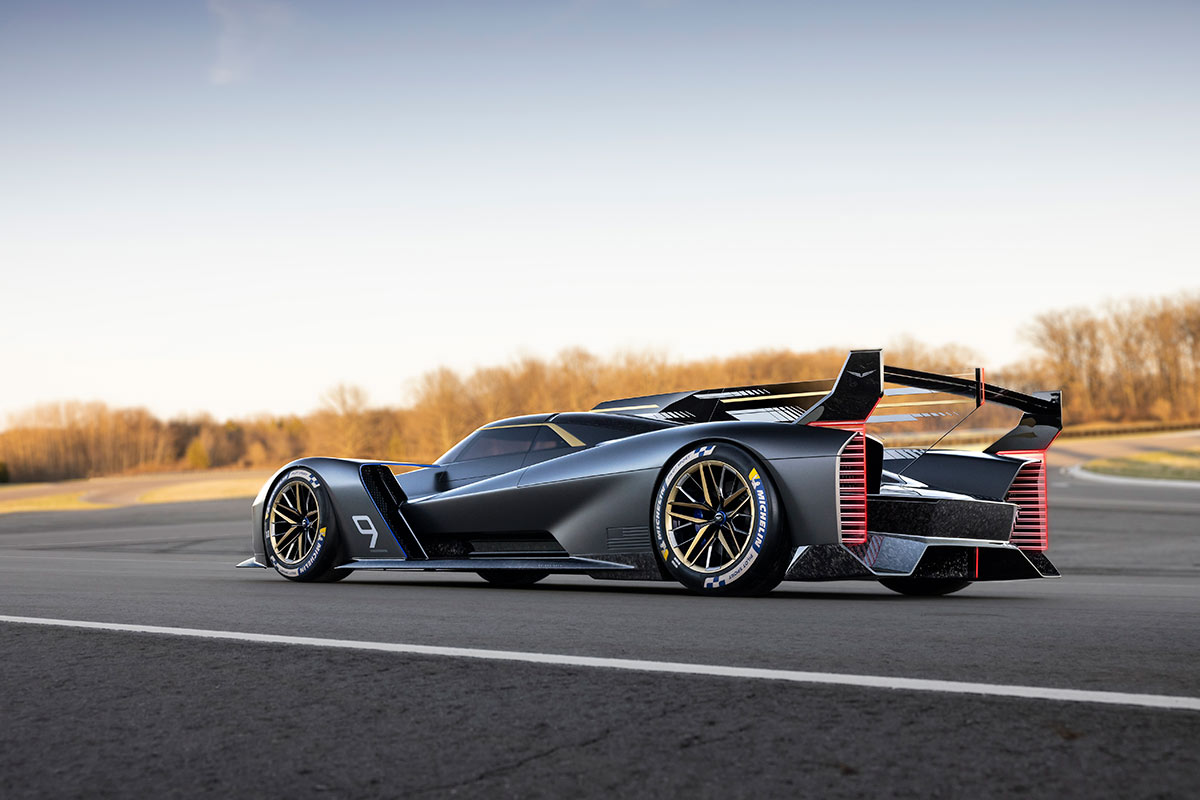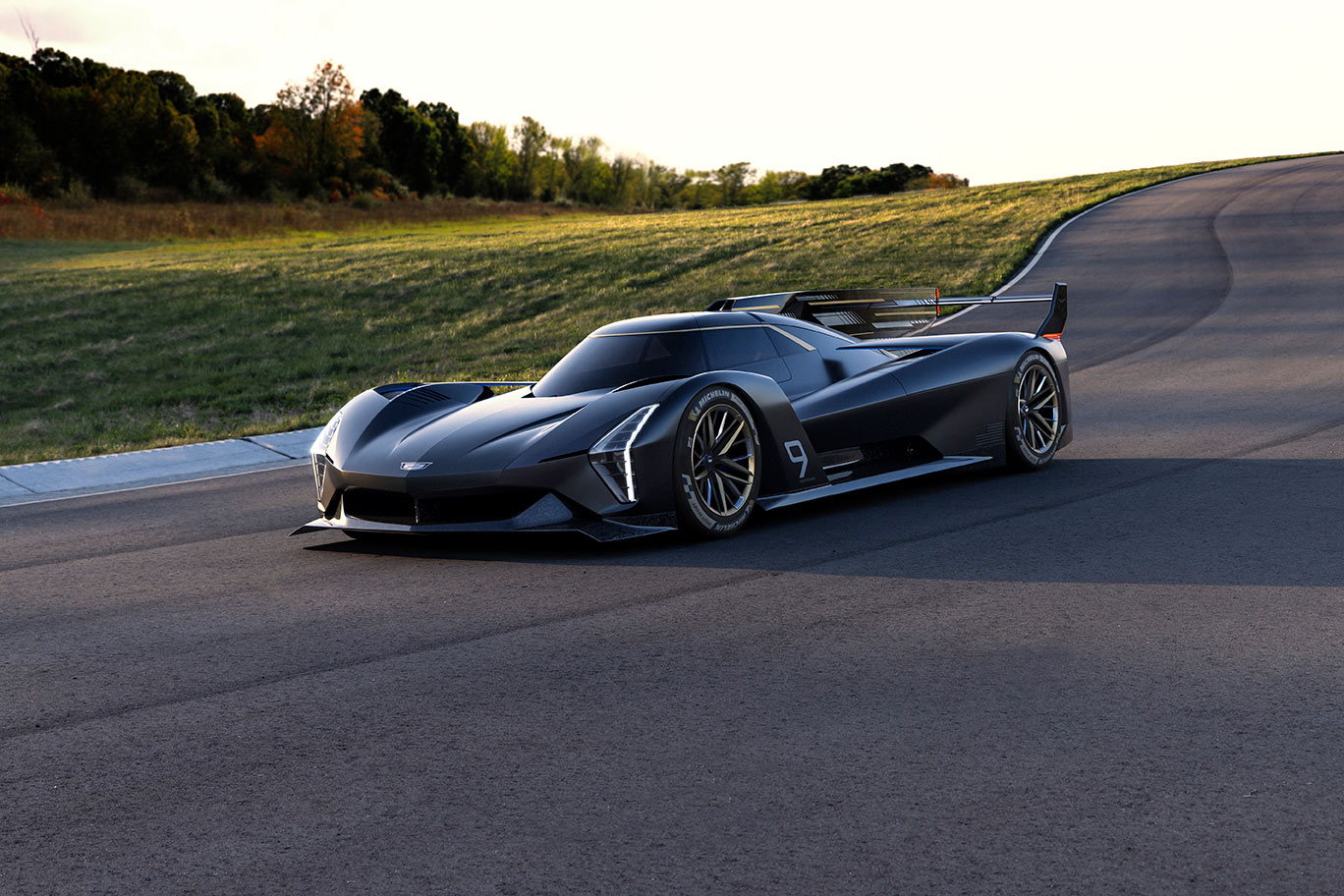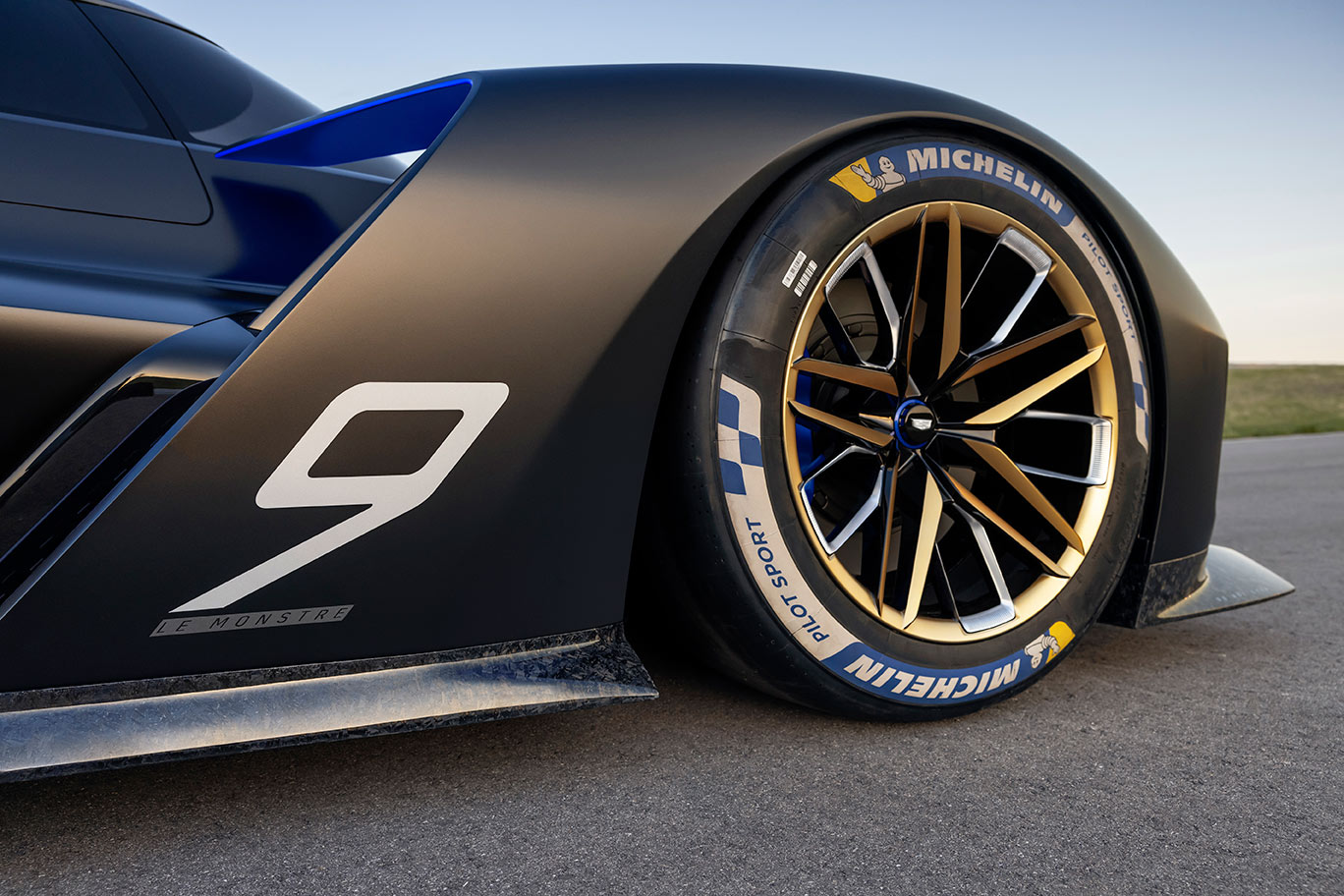SCULPTED IN PERFORMANCE
- The most extreme Pagani Hypercar made exclusively for use on the track
- The new Pagani V12-R, the exclusive beating heart of the Huayra R
- A naturally aspirated V12 generating 850 HP output and 750 Nm of torque
- Maximum track performance up to the red line of 9000 rpm
- A laboratory car that incorporates the technology of future Pagani models
- Celebration of performance, technology and art applied to a track car
- The pinnacle of Pagani Automobili technological development, packed into just 1,050 kg
- Safety at the highest standards
- Arte in Pista: a new, exclusive chapter of tailor-made customer experiences
- Limited to just 30 examples
- Base price: EUR 2.6 million + TAX
San Cesario Sul Panaro, 18 March 2021 – On the wings of a wind that blows ever-stronger, the Huayra R is released to express its full character in total freedom. Pure, passionate, mighty and captivating. It knows no limits.

The new track-focused Hypercar from Pagani combines the highest level of automotive engineering and aerodynamic know-how with unprecedented aesthetic sensitivity in an exercise of style that represents the full expression of Pagani Automobili’s technological development.
Legend meets passion
What is freedom, if not the courage to dream and choose to surpass oneself and one’s limits, the need to express an emotion that refuses to be constrained? A concept that by its very nature escapes definition and labels, but which has always deeply moved the human spirit and determined its needs and intuitions.
The profound need for creative freedom at the heart of the Huayra R is embodied by the clean lines and timeless appeal of the Le Mans and World Sports-Prototype Championship cars of the 1960s and 1970s. Symbols of freedom par excellence and protagonists of an era of motorsport that was synonymous with battles and tension, tears and triumphs, ecstasy and sweat; endurance races that turned drivers into heroes and sensational cars into eternal legends. This concept of freedom and purity inspires the bold lines of the Huayra R, a quintessential celebration of performance, technology and art applied to a track car.

“ Today’s racing cars are focused exclusively on aerodynamics and are largely the product of the wind tunnel. In the 60s and 70s, however, the cars were very fast, certainly dangerous, but beautiful. Prototype sports cars like the Ferrari P4 or the Ford GT40, or the Le Mans cars, had extremely attractive lines, which are still a huge source of inspiration for our cars today. The Porsche 917 is my favourite, with its romantic yet bold shape, which gives the impression of a very fast car. It is beautiful, elegant and timeless. From this desire for freedom, and from the experience of the Zonda R and the cars of the past, came the idea of the Huayra R, like a breath of fresh air.” Horacio Pagani
The Huayra R is a celebration of passion – an extreme, untamed car, developed free from rules except for safety, with the sole aim of offering uncompromising performance. But first and foremost, it was designed to excite.

From tradition to innovation
“Creativity is the result of curiosity and the quest for something that does not exist.”
Taking up increasingly demanding challenges in order to define new goals and pushing new boundaries to test one’s ability has been in the DNA of Pagani Automobili from the very start. This is what happened towards the end of the 2000s when an exciting new project landed on the Atelier’s doorstep and triggered an unprecedented journey of research to create the first Pagani track car, a car that Horacio Pagani thought should incorporate the best racing technology of the time, combined with the beauty and attention to detail typical of all of the brand’s creations.
The Zonda R, created with cutting-edge materials derived from the aerospace industry and from F1, was presented at the Geneva Motor Show in 2009 where, under its refined, but bare natural carbon fiber surface, it embodied the pinnacle of Pagani Automobili technological development, combined with unprecedented attention to aesthetics for a track car. Offering a driving experience and performance simply impossible on the road, the Zonda R demonstrated its full potential, attaining major milestones on the world’s most prestigious circuits and was celebrated on many covers of the main magazines of that time.
Deeply inspired by its racing predecessors, after more than ten years, the Huayra R is reintroducing that same bold and audacious essence, once again combining maximum technical refinement and attention to detail, in a car of outstanding personality that incorporates the technology of Pagani cars of the future. And like all the creations of the Atelier, it is made to measure.
“In 2008 we were working on the Huayra, a very challenging and demanding project from an engineering and stylistic point of view. After so many years, I felt an overwhelming desire for freedom and that’s how the Zonda R came about, a track car free from constraints and regulations. Beautiful, high-performing and safe. The Huayra R, just like the Zonda R, is the freest, most extreme and performance-oriented Pagani car of all time.” Horacio Pagani

Engine – The Pagani V12-R
Much more than an intellectual exercise, the Huayra R is a car packed with innovative solutions developed to achieve maximum performance and is the result of 100% dedicated engineering know-how. The project was not based on any production model, which allowed development targets for each individual component to be raised significantly, forcing the team in San Cesario Sul Panaro to tackle a number of technical challenges. First and foremost, the development of the most powerful, naturally aspirated internal combustion engine in the history of the Atelier.
The Pagani V12-R – the beating heart of the Huayra R – is a 12-cylinder, 6-litre, naturally aspirated racing engine, designed from the ground up in partnership with HWA AG specifically to meet the Atelier’s need to equip its new creation with the lightest, most powerful and efficient track-ready V12 ever created. This need emerged to address the strong desire of Pagani’s customers, who dreamed of an incredibly powerful high-performance, naturally aspirated V12 engine for their new projects.
“The new engine had to have the charm, romance, sound and simplicity of the F1 engines of the 1980s, while incorporating state-of-the-art technology available today.” Horacio Pagani
Equipped with the latest technology derived from the world of racing, the new powertrain delivers 850 hp (625 kW) at 8250 rpm and maximum torque of 750 Nm – already available from 5500 to 8300 rpm – while the 200 bar direct injection system optimises performance by ensuring maximum efficiency in terms of thermodynamics and autonomy.
The Huayra R was created to offer the ultimate experience for anyone who wants to enjoy peak performance on the track up to the red line of 9000 rpm. For the engineers at HWA AG and Pagani, this objective meant not only focusing on increased power as a key element of research, but also prioritizing lightness. This challenge was embraced by Affalterbach engineers without hesitation and after more than two years of design and development, the powerful Pagani V12-R tipped the scales at a total weight of 198 kg (436 lbs), placing it at the top of its category.
Attached to the central monocoque, with which it forms a structural element capable of supporting the transmission system and the chrome-molybdenum alloy steel subframes, the new engine is exceptionally efficient and easy to run, with service cycles only every 10,000 km.
Transmission
The cutting-edge components especially created for the Huayra R include the brand new six-speed sequential gearbox which has been designed, along with the Huayra R’s engine, in collaboration with HWA AG to complete a tailor-made powertrain.
Driven by a 3 sintered metal disc racing clutch, the new non synchronized dog ring gearbox guarantees 95% friction efficiency, offers maximum shift precision, extremely reduced shift times and a total weight of just 80 kg (176 lb). Securely attached to the monocoque as well as the engine, contributing to the overall rigidity of the chassis and withstanding heavy dynamic loads, the complete transmission system is designed to integrate structurally with the entire suspension unit through dedicated attachment points in order to maximise the architectural efficiency of the car.
Exhaust System
The result of meticulous acoustic and technical planning and extensive research of materials, geometries and sound design, the new exhaust system developed specifically for the Huayra R guarantees rapid and effective evacuation of exhaust gases, allowing the Pagani V12-R to deliver all of its incredible power, while ensuring minimum back pressure. Made from Inconel 625/718 alloy, with tubes one-third the thickness of those normally used in road car equipment, and coated in ceramic to protect the engine bay and ensure better heat dissipation directly to the outside, the entire system boasts an extremely lightweight construction, developed not only to guarantee maximum aerodynamic performance, but also to give the Huayra R’s occupants an unprecedented acoustic experience. The soundtrack of this racing thoroughbred is indeed pure emotion, thanks to the unique design of the manifolds and tailpipes, with identical length exhaust pipes for all twelve cylinders allowing the V12-R to roar like a F1 car of the past. The car is also equipped with mufflers that can be fitted as required, ensuring that noise emissions are reduced to within the FIA limit of 110 decibels for noise restricted tracks.
Chassis and Materials
The Huayra R’s monocoque is the result of specifically dedicated development to guarantee its occupants the total involvement and driving experience of an authentic racing car.
HWA’s vast experience in fine-tuning and production of racing cars and components, together with Pagani Automobili’s 30 years of know-how in the development of advanced composite materials, made it possible to apply structural principles and innovative engineering solutions from the world of motorsport to the Huayra R chassis to produce a safe structure suitable for track use.
Manufactured using the latest composite technologies developed by the Atelier, such as Carbo-Titanium HP62-G2 and Carbo-Triax HP62, the new monocoque incorporates the seats fully, guaranteeing maximum protection together with specific shock-absorption side structures and the roll-bar, while maintaining easy access to the cockpit. The front frames, made of chrome-molybdenum alloy steel, benefit from the development experience and crash tests carried out to fine-tune the Huayra project, while also being designed specifically for the track. The rear frame, in conjunction with the powertrain unit, forms an integrated structure with the monocoque, helping to maximise the mechanical properties of the chassis, resulting in a 51% increase in flexural rigidity and 16% increase in torsional rigidity compared to the road version.
The combination of new structural principles and materials specially developed for the Huayra R design, together with the resulting enhancement of the mechanical properties of the structure, means that the new car tips the scales at a dry weight of 1,050 kg..
Safety
The comfort and performance of a sports car only acquire value when combined with an environment that offers maximum protection. This is an aspect on which the team in San Cesario Sul Panaro never compromises and which is a fundamental and indispensable part of every project undertaken by the Atelier. Careful design and meticulous research conducted on the materials, bodywork and roll bar structure were central to the development of the Huayra R in order to give customers not only the most thrilling track driving experience, but above all, to provide a safe car that meets the most stringent FIA requirements for GT vehicles.
The heavy-duty safety cage integrated into the central monocoque incorporates special absorption structures, made from composite materials, at the front, sides and rear of the car which are specifically designed to absorb kinetic energy in the event of impact or rollover.
Inside the passenger compartment, the extinguishing system is activated automatically in the event of a fire, while the seats, which are fully integrated into the carbon monocoque, are equipped with six-point safety belts and covered in Nomex flame retardant material. The special Ener-Core EC 50, FIA approved foam padding ensures an optimal driving position, adapting perfectly to the body shape of the occupants, while the carbon fibre headrests are also fitted with dedicated lateral protection.
Aerodynamics
For Pagani Automobili, building complex cars, rich with technological and innovative solutions requires not only brilliant minds, but true artists. For the skilled craftsmen involved in the development of the Huayra R, this mission entailed intense study and research to combine the most technical and performance aspects with the utmost formal elegance.
Every line and surface of the Huayra R is, in fact, designed to generate maximum aerodynamic load, with an initial development target of 1000 kg of downforce at 320 km/h (2204 lb at 199 mph) and a ground clearance that allows maximum aerodynamic performance to be achieved, guaranteeing safe and predictable behaviour under all conditions. An ambitious goal, but one that was quickly achieved with excellent results right from the first aerodynamic tests, during which the car showed great stability and balance in line with the set target of 46%-54% downforce distribution throughout the entire speed envelope, while maintaining reduced sensitivity to ground clearance.
An exciting result, although not enough to win the full approval of the team led by Horacio Pagani, who wanted a more sinuous and captivating aesthetic treatment for the Huayra R; a design even more focused on emotion. For this reason, further research was undertaken on the design and stylistic elements of the car, which led the design team to a curious and unexpected discovery: as the aesthetics of the car changed, performance and aerodynamic efficiency improved, demonstrating the importance, in every aspect of design, of the quest for beauty interpreted as the most perfect union of form and function.
Contributing to reliable performance of the car, there are two new side air intakes at the front to ensure maximum cooling efficiency for the front wheel braking system, as well as channelling the outgoing airflow towards the side of the car, minimising turbulence and helping to generate maximum downforce.
Ensuring adequate cooling of the powerful engine required relentless work on the radiator and internal fluid dynamics, while new wing profiles were introduced on the front bonnet to improve air extraction speed and create greater stability at the front. New air vents above the wheel arch and the generous side outlet allow even more effective channelling of air to flow to the rear aerodynamic appendages.
The new roof scoop, with its integrated centre fin, guarantees maximum intake efficiency for the Pagani V12-R. The flat bottom, in combination with the rear diffuser and the distinctive wing, help to generate maximum downforce.
Suspension
The sophistication of the suspension system of Pagani cars has always been a source of pride for the Atelier. The result of more than 30 years of research and development, this technical and technological prowess, subject to incessant experimentation, found an important test bed with the Zonda R. This led to the definition of highly innovative technical solutions that would soon afterwards equip the Huayra Coupé. Similarly, the new kinematics and sophisticated geometry of the suspension unit developed specifically for the Huayra R are the result of one of the most intense design and experimental phases ever experienced by the Atelier, and represent the future of Pagani Automobili on the track.
With suspension made of forged aluminium alloy, independent double wishbone with helical springs and electronically controlled active shock absorbers, the entire configuration of the new system with rigid mounting points, not only allows all the power and the extraordinary torque of the Pagani V12-R to be transferred to the ground, but also offers unprecedented driving precision. In fact, the Huayra R’s advanced and refined elasto-kinematics allow for greater camber recovery and optimised dynamic bump steer correction to guarantee ideal grip for the slick tyres in every situation and allow the driver to attack the ups and downs of Eau Rouge without losing a single millisecond.
Interconnected with the active aerodynamic system, the active suspension ensures that the Huayra R responds appropriately in all conditions, allowing perfect balance when entering and exiting corners and maximum stability when braking, for precise and always predictable behaviour.
Brakes
There is a long-standing relationship between Pagani Automobili and Brembo, which has always focused on equipping Pagani Hypercars with state-of-the-art braking systems to ensure maximum performance, perfectly integrated design, safety and unprecedented lightness.
The Huayra R boasts world-class braking power thanks to the brand new CCM-R self-ventilated carbon-ceramic discs coupled with racing pads. Specially developed to allow the new car to exploit the best available technology, the new CCM-Rs have significant advantages in terms of thermal conductivity and maximum braking power, typical of carbon used in competitions. Characteristics that allow for greater rigidity and lower operating temperatures in extreme track use while, at the same time, helping to extend the life cycle of the system.
Tyres and wheels
With its unparalleled experience in motorsport, international GT3 and single-make championships, and a glorious racing past and present rooted in the famous victory in the very first F1 race at Silverstone in May 1950, Pirelli has dedicated the last 110 years of its history to developing the best racing tyre technology to enhance the performance of the world’s best sports cars.
The long process of research and development carried out in partnership with Pagani Automobili resulted in a slick version of the P Zero tyres that offers maximum precision and a feeling of total control even to the non-professional driver, ensuring exceptional braking behaviour and optimal traction.
With standard sizes dictated by the world of racing, to ensure the greatest advantage in terms of cost and availability for customers, this P Zero slick version will benefit from all future Pirelli developments on motorsport tyres that can be fitted on the car without any problem. Available in Dry and Wet versions, specially designed to allow the Huayra R to attack the tarmac in all conditions, Pirelli’s new tyre is designed to provide the grip needed to allow pin-point precision on every curve.
The monolithic rims, custom-designed in conjunction with APP Tech and forged from aluminium alloy, were designed to achieve maximum lightness in 19 inches.
The interior – One with the Driver
Inside the Huayra R, every detail is designed for all-round involvement and maximum adrenaline, for a raw, thrilling and unfiltered driving experience.
All essential controls, such as traction control, ABS map selection, radio communication and other important functions are immediately available on the quick-release, height and length adjustable steering wheel, which can be pulled out for easy access to the cockpit. The gearshift paddles are mounted at the rear of the steering wheel.
Secondary controls such as lights, engine maps, suspension maps and brake balance selector are available on the centre console. A high resolution, fully customizable, motorsport dashboard display feeds the driver with the necessary information to monitor the status of the vehicle. The onboard telemetry logs all vehicle data, enabling the driver and pit crew to analyze performance, find the perfect vehicle settings for any given track, and monitor the vehicle.
To perfectly match the driver’s ergonomics, the adjustable pedal set has been custom-designed in partnership with AP Racing exclusively for the Huayra R and incorporates the principles of lightness and style that are at the essence of this car. Crafted with the quality of finish and aesthetic attention typical of all the Atelier’s creations, the Huayra R’s cockpit cannot fail to impress thanks to the meticulous design of every screw, lever and surface, making its extraordinary concentration of speed-focused technology an ideal driving environment, tailor-made for each driver.
Arte in Pista
An essential part of the Pagani experience are the meet-ups and shared moments dedicated to the members of the exclusive family of customers, eager to participate in the different events organised by the brand each year on four different continents to offer an experience of full immersion in the Pagani world. These started with the Pagani Raduno, a highly personalised event, and now an established tradition in the history of the Atelier. For more than 16 years, the various editions of this event have combined days of driving along iconic routes and breathtaking landscapes, with unique lifestyle experiences, often ending with an entire day dedicated to top performance on the world’s most prestigious circuits.
With Arte In Pista (“art on the track”), the Pagani Atelier seeks to take the experience to a new level, offering a calendar packed with personalised events that will allow Huayra R owners to enjoy the full excitement of driving a Pagani Hypercar, pushing it to its maximum performance, with the dedicated assistance of the Pagani Team and the support of professional drivers. From individual track days at internationally renowned circuits to group events, tailor-made for customers in North America, Europe, Asia and the Middle East: each occasion combines moments of leisure in beautiful locations with the raw excitement of driving one’s own Pagani on the track.
“A car sculpted in performance. Not just a track car, but a very intimate club of true adrenaline seekers.” Horacio Pagani
– TECHNICAL SPECIFICATIONS –
ENGINE: Pagani V12-R – 6.0 litres – naturally aspirated 12-cylinder V
POWER: 850 HP (625 kW) at 8250 rpm
TORQUE: 750 Nm from 5500 to 8300 rpm
TRANSMISSION: Rear-wheel Drive
GEARBOX: 6-speed sequential, non-synchronized dog ring gearbox
BRAKES: Brembo CCM-R ventilated discs: Front 410×38 mm with monolithic
6-piston calipers; Rear 390×34 mm with monolithic 6-piston calipers
WHEELS: APP forged monolithic aluminum alloy: Front 19 inches;
Rear 19 inches
TYRES: Pirelli P Zero slick version – Dry and Wet: Front 275/675 R19; Rear 325/705 R19
SUSPENSION: Forged aluminum alloy independent double wishbone with helical springs and
electronically controlled shock absorbers
CHASSIS: Monocoque in Pagani Carbo-Titanium HP62 G2 and Carbo-Triax HP62 with front
and rear tubular subframes in CrMo alloy steel
DRY WEIGHT: 1050 Kg (2314 lb)
